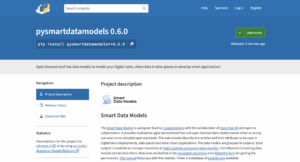The contribution manual has minor updates frequently, but now we have created a brand new version
– Restructuring the contents
– Including explanation on how to use the test service for new data models
– Making more understandable the contribution workflow
– Guidelines for contributing
– The list of support channels, including the new on discord
– Move to the annex the slides for the automatic documents generated on the publication process
and helping to make more understandable to those users recently joining the Smart Data Models initiative.
As always the shortcut to reach it works: https://bit.ly/contribution_manual
But you can also find a direct link in these locations
Upper menu -> Contribution manual (7th option)
Main menu -> documentation -> Contribution manual (5th option in the drop down menu)
Feel free to make your comments on info@smartdatamodels.org or as comments in the manual.













